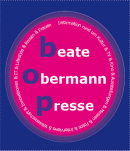Michelangelo and men imTeylers Museum in den Niederlanden 25.10.2025 bis 25.01.2026
This exhibition looks at Michelangelo's men from all perspectives. To what degree was he influenced by classical sculpture? Did he indeed dissect dead bodies himself? How important were his models? And what role did the male body play in the artist’s personal life, in his adoration of the body of Christ, and in his intimate friendships with men?
In order to find answers to these questions, the exhibition features a number of exceptional loans, as well as the drawings from Teylers Museum’s own collection. Furthermore, this will be the very first time that a marble sculpture by Michelangelo is shown in the Netherlands.
Larger than life
Michelangelo was a keen observer. He closely examined the work of other artists, studied sculptures from classical antiquity, and worked with life models. He was one of the first artists to dissect dead people with the aim of better understanding the human physique.
These were the building blocks of Michelangelo's quest for the ideal body. Although he placed each muscle in the right location, these bodies have a perfection that transcends nature.
Michelangelo's men are larger than life.
Influential bodies
Michelangelo’s portrayals of male bodies changed the course of art history. Impressed by his towering, naked David, the city government of Florence commissioned Michelangelo to paint a large mural depicting the Battle of Cascina. Packed with nude soldiers in a wide range of poses, his design was extremely impressive. The soldiers’ heroism perfectly matched how the residents of Florence saw themselves. Michelangelo’s figures were copied and distributed all around Europe.
After this, the Pope commissioned Michelangelo to paint the ceiling of the Sistine Chapel in Rome, the heart of the Roman-Catholic church. Including the creation of Adam in the centre, the end result became world-famous. Alternating with scenes from the Bible, Michelangelo again painted nude male figures. Their idealized bodies aspire to the godly perfection of Adam, the first human being, who after all was created in God’s image.
Building the body
Many Renaissance artists, including Michelangelo, used drawings after life models as the point of departure for their work. Michelangelo constructed his figures from separate studies of individual body parts. He mainly focused on the upper part of the body, clearly fascinated by the muscles on and around the chest area. The artist made detailed sketches of arms, legs, heads, and hands to further perfect his depictions.
Male and female
During Michelangelo's lifetime, the everyday lives of men and women were much more separated from each other than today. Most artists were men and the same applied to their models, even those who were meant to depict women. In his work, Michelangelo often gave his female figures male characteristics. According to the accepted notions of that time, this sense of masculinity was in sync with their biblical or mythological status. Michelangelo sometimes appears to have deliberately opted for androgynous figures, which
means neither male nor female. This further heightened the sense of mystery.
The divine body
Christianity was an integral part of life during the Italian Renaissance. Michelangelo too was a deeply religious man. His personal perception of faith is reflected in his representations of the body of Christ. These are softer and drawn with more emotion than his depictions of other male bodies, which are more idealized and muscular. While Michelangelo’s drawings of Christ were often used as designs for sculptures or frescoes, they also appear to have served as personal meditations on the suffering of Christ.



